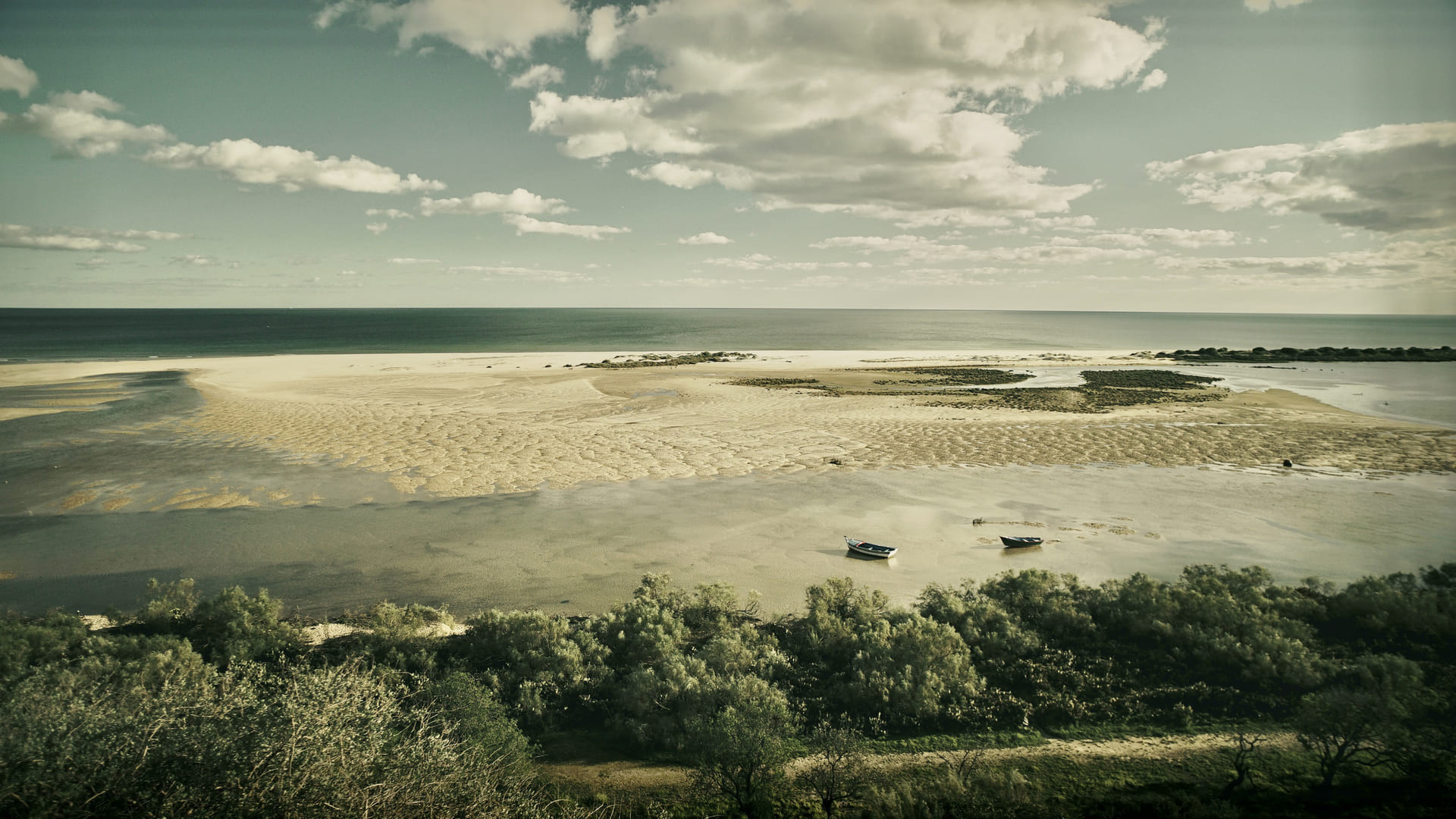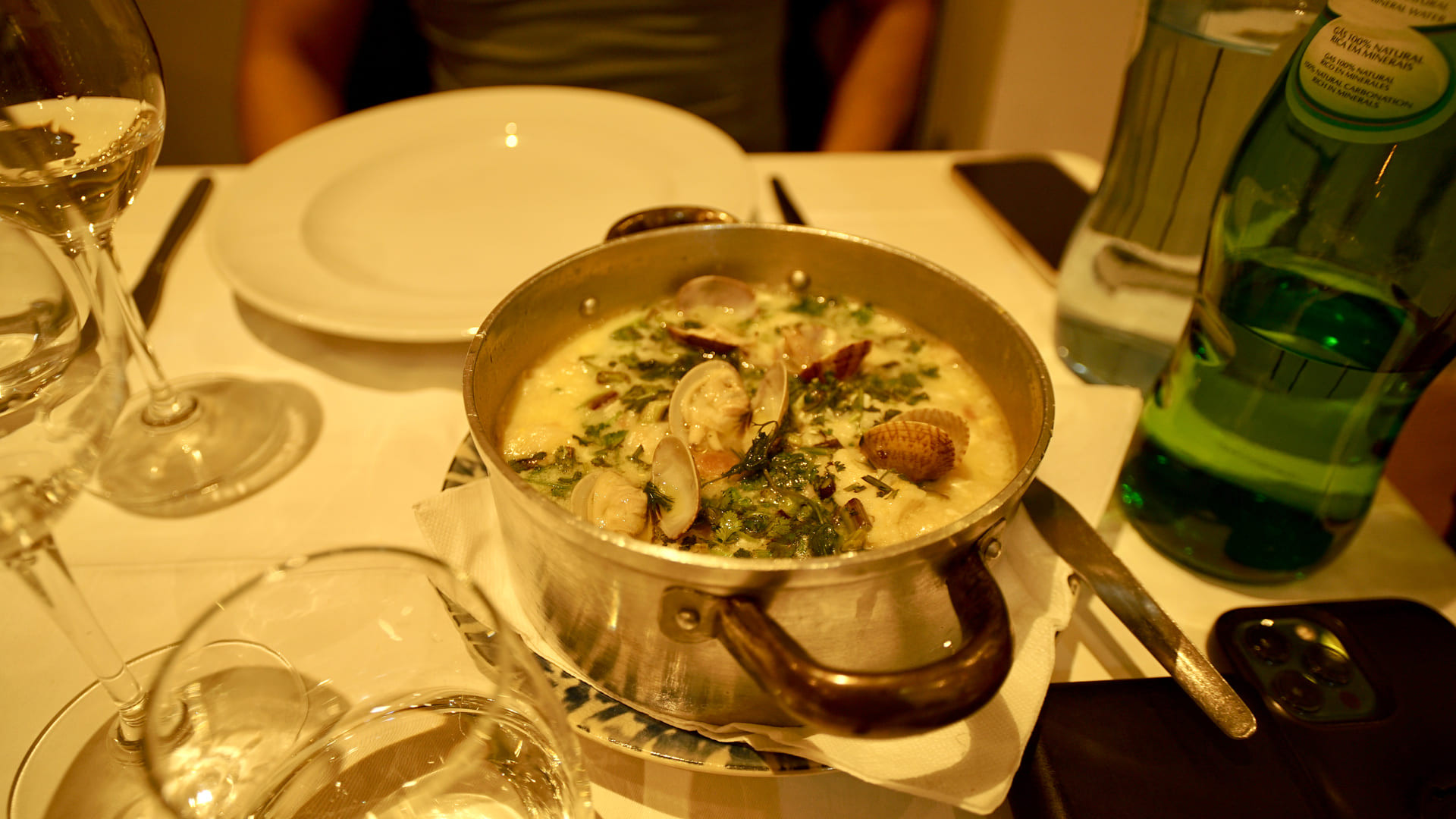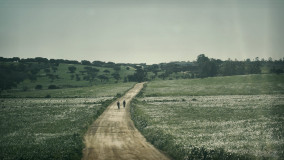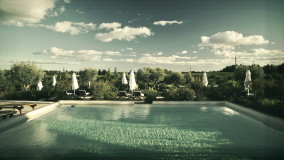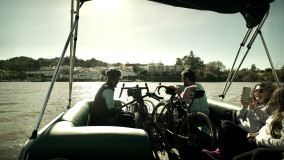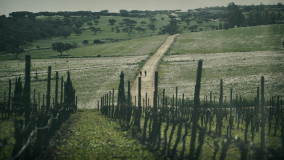Our bike tour in Portugal with Live Love Ride exceeded every expectation of our Trip to the the Alentejo and the Algarve region. We biked down the Southern coast of Portugal and the views were breathtaking. Pictures simply can not do it justice. The biking was challenging and rewarding. Looking forward to the amazing food and wine at the end of the day was certainly a highlight. The fresh fish and incredible Portuguese wine were fabulous.
We were so impressed with the hotels chosen by the company. Each night brought a new sense of adventure with beautiful rooms and great views. The laid back atmosphere of the region was exactly what my wife and I were looking for.
Our tour guides for the week Rodrigo and Joao were an instant hit! I never expected the type of attention they provided. The biking was only a part of it. Attention was paid to our every need, from luggage transfers to our meals and wine choices. They were both warm, caring and courteous. I am proud to call them my friends! We hope to someday go back and do the North of Portugal with them!
Gravel Bike Tour in Algarve: From Natural Parks to Coastal Bliss
Highlights from Our Gravel Bike Holidays in Algarve
Embark on an unforgetabble gravel bike tour in the Algarve, a journey that weaves through the heart of southern Portugal‘s most breathtaking landscapes. This adventure is not just a ride; it’s an immersion into the essence of gravel biking, blending the rugged beauty of natural parks with the serene majesty of the Algarve’s coastline.
Spend a week traversing diverse terrains, from the dense foliage of Guadiana Natural Park to the historic wonders of Mértola’s Castle and the abandoned mines of São Domingos. Each pedal stroke leads you further into a world where nature and history collide, offering a backdrop that shifts from the wilds of inland trails to the expansive views of the ocean.
Our journey takes us along the Guadiana River, marking the natural border with Spain, along the paths of former smuggling routes, before turning south towards the heart of the Algarve. Here, gravel paths reveal the hidden trails of the region, guiding us through landscapes that few have the privilege to explore. Encounter the untouched beauty of secluded beaches and the sparkling seas of the Algarve, from the tranquil waters of Cacela Velha, Ria Formosa and Olhão.
This tour is a haven for those who seek the thrill of gravel biking amidst the most stunning settings nature has to offer. Experience the diversity of Portugal’s southern terrain, promising challenges for seasoned cyclists and rewarding discoveries for all. Along the way, indulge in the Algarve’s rich culinary heritage, savoring the freshest seafood and local delicacies, a testament to Portugal’s vibrant gastronomy.
Designed for both the gravel biking enthusiast and the adventurous spirit looking to explore off the beaten path, this tour encapsulates the essence of adventure cycling. From the serene riverside trails to the rugged coastal paths, each day unfolds as a new chapter in an unforgettable journey through the Algarve’s natural parks to the sea.
Join us for a gravel biking experience that goes beyond the ordinary, where every turn unveils a new vista, every hilltop promises a breathtaking view, and every moment on the trail captures the soul of the Algarve.
Gallery: Gravel Cycling in the Algarve
Day to Day on Our Gravel Bike Vacation in the Algarve
Day 1: Transfer from Lisbon or Faro to Albernoa
Pick-up at Lisbon or Faro airport and transfer to Albernoa (2h or 1h20m). Private briefing upon your arrival at your wine estate in deep Alentejo, from where you'll be riding down south to the Algarve. Enjoy your countryside retreat by indulging on a local wine tasting experience or balloon ride.
Hotel: Herdade da Malhadinha Nova (included in the premium option) or Herdade dos Grous
Day 2: Albernoa – Mértola (51km, 800 meters accumulated height)
Breakfast at the hotel and start of the ride. Today, you'll set off on a captivating 51km bike journey from Albernoa to Mértola, tracing a route that plunges deep into the heart of the Guadiana Natural Park. Mértola, stands out not just as a point on the map but as a historical beacon. Dominated by its imposing castle, Mértola offers a panoramic vista that stretches across the town and the serene Guadiana River below. This ancient fortress, perched atop the hill, is a silent witness to the passage of time, offering cyclists a tangible link to Portugal's rich past. As you pedal through the Guadiana Natural Park, the countryside unveils its "montado" landscape—a mosaic of cork oak and olive trees under which the region's biodiversity thrives. The gravel trails meander through this tranquil setting, guiding cyclists away from the hustle of modern life and into a world where nature dictates the pace. The journey is dotted with quaint villages that embody the soul of Alentejo's rural life. Here, time seems to move slower, allowing for moments of genuine connection with the local culture and an appreciation for the simple pleasures that define this region.
Hotel: Hotel Museu (upgrade to superior room included in the premium option)
Day 3: Mértola – Minas de São Domingos – Alcoutim (65km, 1200 meters accumulated height)
Breakfast at the hotel and start of the ride. Starting from the historic town of Mértola, you'll cross the Guadiana River, venturing through serene back roads and gravel trails towards the intriguing Minas de São Domingos – an industrial archeological site that offers a unique glimpse into Portugal’s mining past, set within a stunning landscape that bridges history and nature. Your adventure continues as you descend to Pomarão and cross into Spain, following the Via Verde ecopista towards Sanlúcar de Guadiana. This scenic route showcases the diverse beauty and tranquility of the Iberian countryside. From Spain, you'll cross the river on a boat, entering the Algarve via the picturesque village of Alcoutim – a crossing that was used in the past as a contraband route between the two countries.
Hotel: Hotel Alcoutim (upgrade to superior room included in the premium option)
Day 4: Alcoutim – Tavira (69km, 800 meters accumulated height)
Breakfast at your hotel and start of your ride. Starting from the charming village of Alcoutim,today's ride is packed with scenic beauty and unspoiled nature as you follow the GR15 route southwards. This trail, primarily composed of gravel, offers a raw and exhilarating cycling experience that connects you deeply with the natural landscapes of the Algarve. As you pedal along the Guadiana River, the tranquility of the water on one side and the lush greenery on the other create a serene backdrop to your adventure in Portugal’s countryside. Approaching Castro Marim, the silhouette of the castle invites a moment of awe and exploration, standing as a sentinel over the land with centuries of history within its walls. You’ll then follow back roads towards Altura and then follow the coastal trails towards the idyllic Cacela Velha. Riding by the seaside, with the Atlantic breeze as your companion, the gravel trails weave through some of the most picturesque landscapes the Algarve has to offer. Keep riding until tou reach Tavira
Night at Pousada de Tavira (included in the premium option) or Vila Galé Tavira
Day 5: – Tavira – Olhão loop (60km, 120 meters accumulated height)
Breakfast at your hotel and start of your ride. Today you'll embark on a soft gravel ride by the Algarve's breathtaking coastline – an immersive experience into the natural beauty and vibrant culture of southern Portugal. Take your time cycling by Tavira, one of the Algarve's most charming and historically rich cities. Navigating through its historical city center on your bike, you'll be enveloped by a sense of timelessness, where each cobblestone and corner tells a story of centuries past. The adventure continues as you cycle past some of the Algarve's most stunning beaches, including Barril and Fuseta. The sound of waves, the gentle sea breeze, and the warmth of the sun accompany you, creating moments of blissful connection with nature. Your journey leads you to Olhão, a lively coastal town known for its bustling market. This is the perfect place to explore local life, taste fresh seafood, and immerse yourself in the vibrant atmosphere that defines the Algarve. The market in Olhão, with its array of colors, scents, and sounds, offers an authentic taste of local culture and cuisine, making it a highlight of your cycling adventure. As this is a loop ride, you can also skip the riding all together and enjoy the Algarve's sunny beaches!
Night at Pousada de Tavira (included in the premium option) or Vila Galé Tavira
Day 6: – Tavira – Barrocal Algarvio loop (56km, 600 meters accumulated height)
Start your day with breakfast at your hotel before setting off on a stunning gravel ride through the Algarve’s diverse landscapes. Begin in the historic center of Tavira, a town renowned for its timeless charm and rich history. As you navigate its cobblestone streets and admire the ancient architecture, you’ll feel a connection to the Algarve’s vibrant cultural heritage. Leaving Tavira behind, you’ll ride eastward along the Atlantic Ecovia, towards Fábrica, where the route takes a turn inland, leading you into the heart of the Algarve’s Barrocal region, where the coastline gives way to a patchwork of rolling hills, olive groves, and citrus orchards. The gravel trails here provide a mix of gentle climbs and thrilling descents, offering the perfect combination of adventure and relaxation.After conquering the Barrocal’s rugged terrain, you’ll enjoy a winding descent toward the Gilão River, where the natural beauty of the Algarve accompanies you back to Tavira. The day concludes as you return to the town’s historical center, the perfect place to unwind and reflect on a day of cycling through some of southern Portugal’s most stunning landscapes. As this is a loop ride, you can also skip the riding all together and enjoy the Algarve's sunny beaches!
Night at Pousada de Tavira (included in the premium option) or Vila Galé Tavira
Day 7: Transfer Tavira – Faro or Lisbon
Breakfast at the hotel. Transfer to Faro or Lisbon airport.
EXTENDED STAY IN LISBON/FARO: On Demand
Map of the Gravel Bike Tour Algarve
The terrain on this route is a dynamic mix of well-maintained gravel trails, quiet backroads, and packed dirt paths, weaving through southern Portugal's diverse landscapes. Expect gentle climbs and flowing descents, especially in the Barrocal region and the rolling hills around Alcoutim and Mértola, with cobblestone sections in historic towns like Tavira adding rustic charm. Riverside trails and coastal paths near the Guadiana River and Ria Formosa lagoon are smoother and more tranquil, while occasional sandy patches and compacted dirt sections add a touch of adventure. This varied terrain ensures a rewarding experience for gravel cyclists seeking both challenge and natural beauty.
Options for Gravel Cycling in the Algarve
Options for Gravel Cycling in the Algarve
Prices for Gravel Cycling in the Algarve
Group Dates for the Next Gravel Bike Vacation in the Algarve
Your group, your dates.
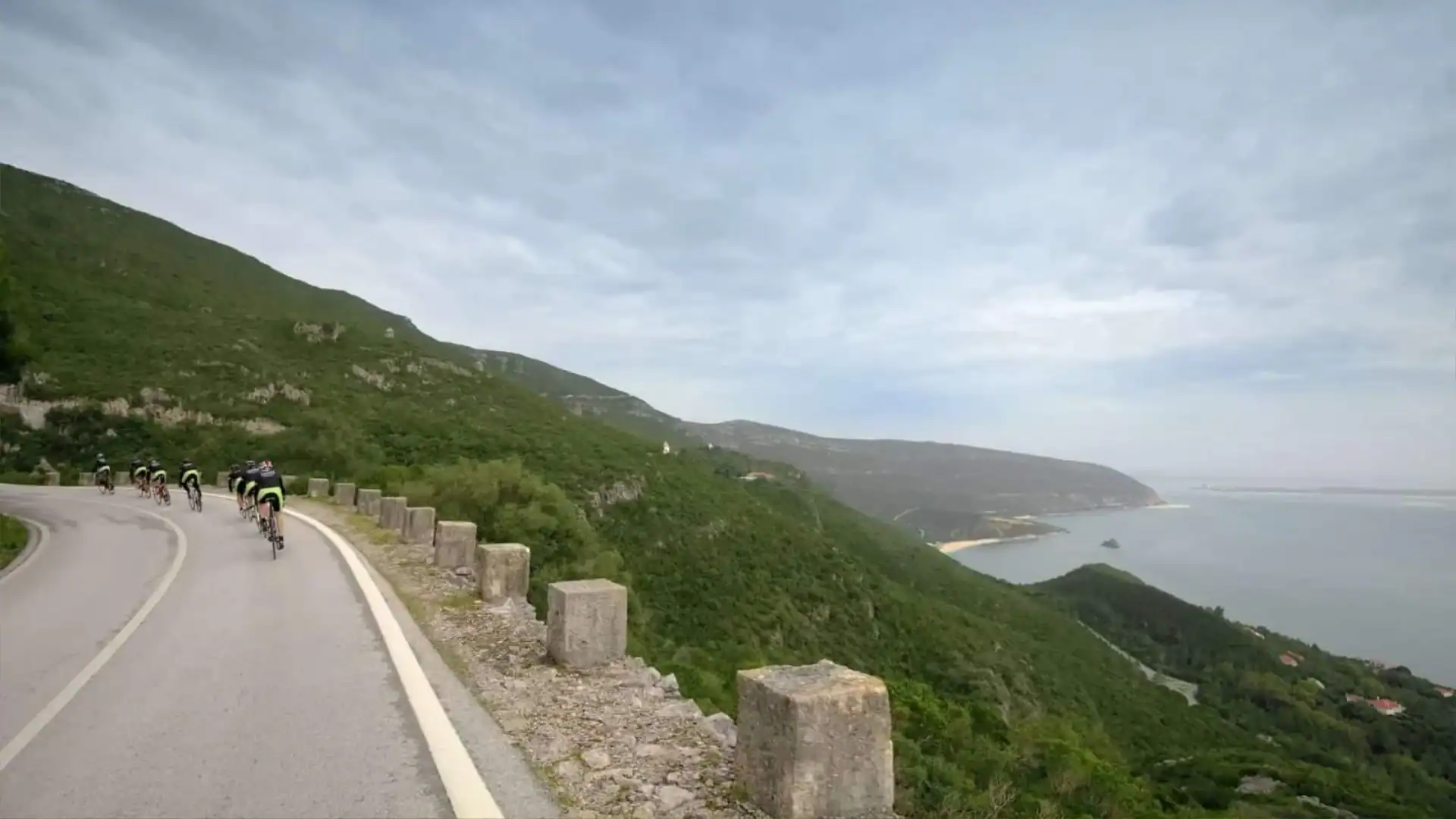

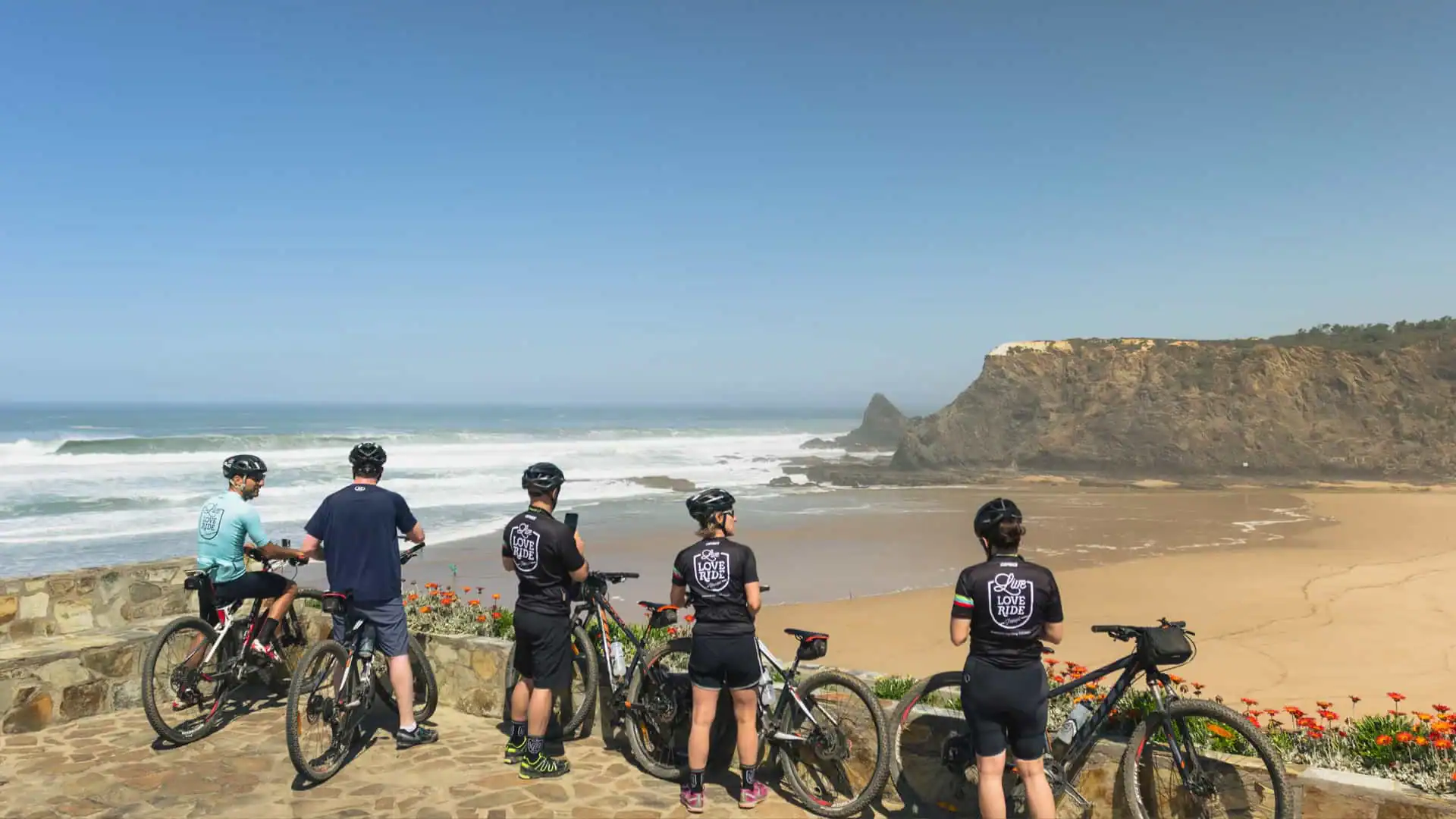
Private rides:
If you are looking for a different, exclusive experience, you can make this ride private for your group. Just choose any open trip date, get your group together and contact us to know the private trip listing.
Customized rides:
If you represent a group and want to schedule a different date than the ones listed, we are available to customize this and other experiences to better suit your needs and availability. Please contact us for more information.
AT YOUR SERVICE
Our team is composed of portuguese tourist guides and bike riders, in love with our country and proud to present the best landscapes, gastronomy, history, culture and experiences to anyone who chooses to ride in Portugal.
For the last five years, our team has been involved in the making of over 200 bike-related events in Portugal, from Granfondos to casual mountain bike rides, throughout the country. We are seasoned travelers and riders, able to tap into our local knowledge to provide great experiences to our guests.
Our team is composed of dedicated guides and riders. We make sure our guests’ cycling holidays run smoothly and exceed their expectations.
Road - Scott Addict or Scott Addict Disc
On the road, you will be riding a Addict - a lightweight and comfortable carbon bike, designed to help you on the climbs and keep your speed on flat sections. Our Addict bikes come equipped with a full Shimano Ultegra kit, for great performance.
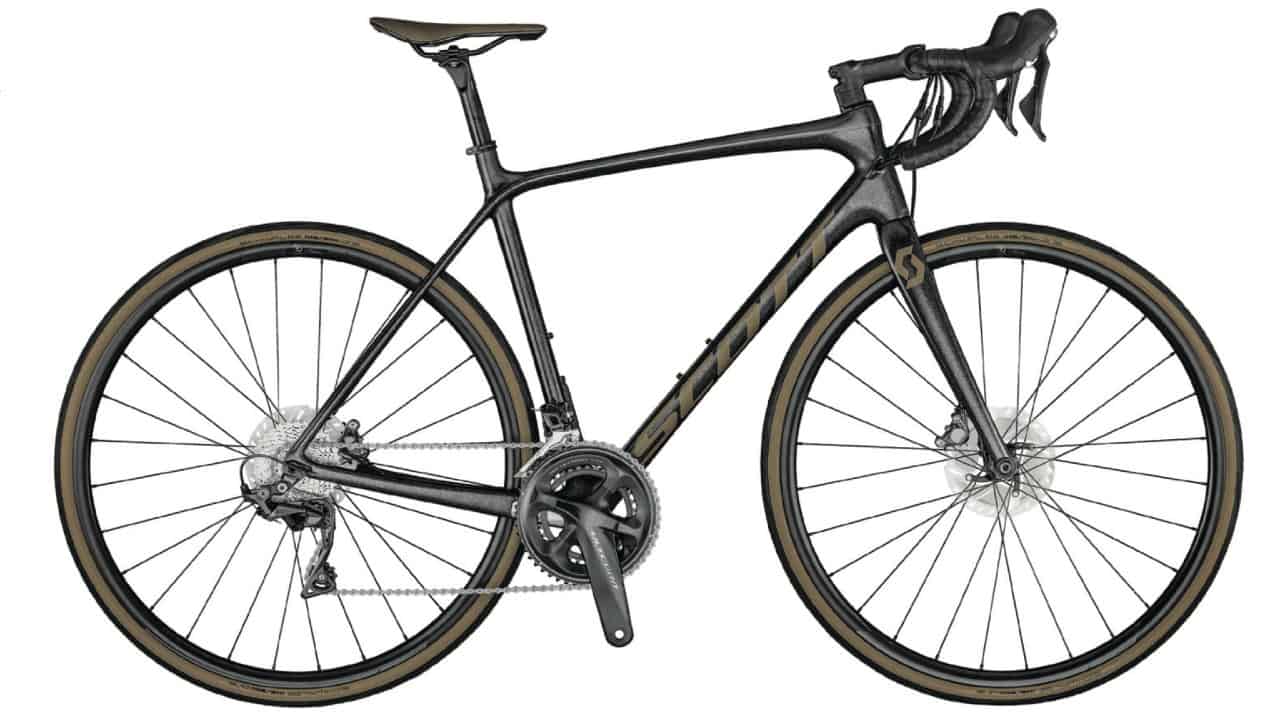
MTB Mountain bikes - Scott Aspect 910
On our mountain bike tours in Portugal, you'll be riding a Scott Aspect 910. These all-rounder, 29 inch wheel size bikes come equipped with front suspension with suspension lock, for better reaction and comfort. They are perfect for short or long distance rides and even for technical trails, and come equipped with Shimano components for the best cycling experience.
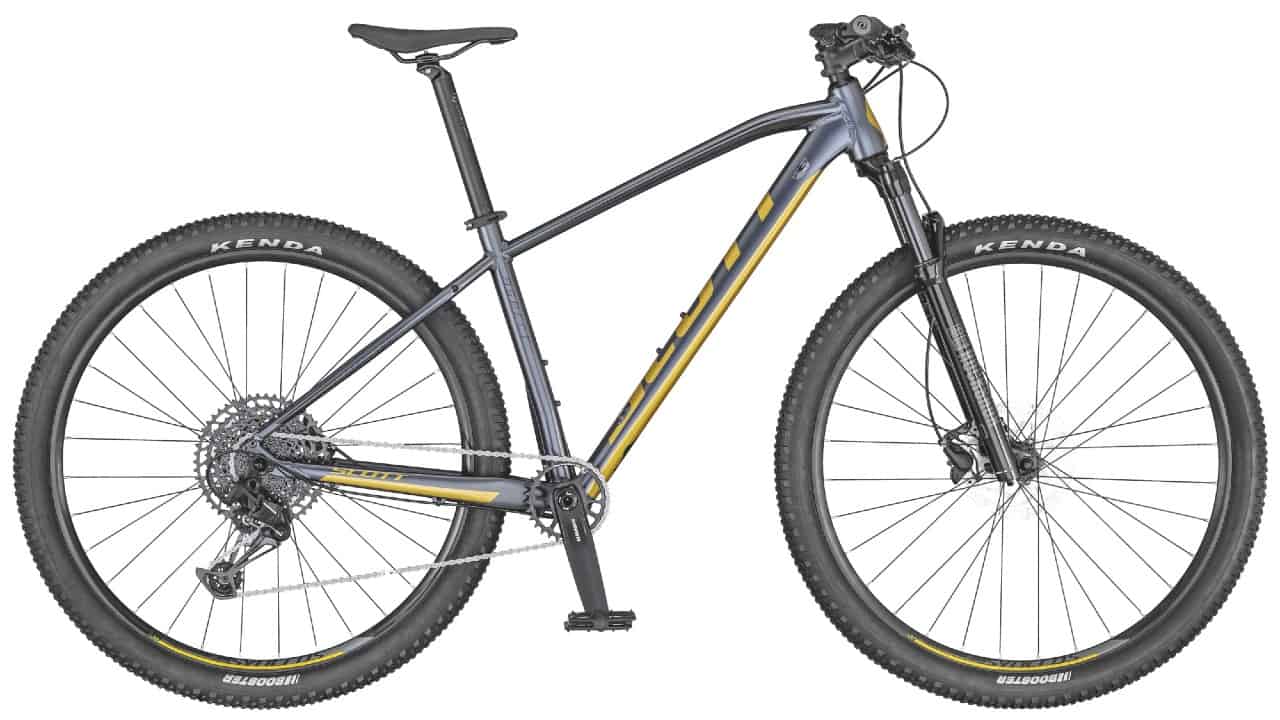
Touring - Scott Sub-Cross
For mixed terrain, we equip our Scott Sub-Cross fleet with touring tires, so that you’ll roll easily by the countryside backroads and macadam trails alike. These bikes are equiped with a front suspension remote lock-out and handle bar bags, making them the perfect option for touring enthusiasts
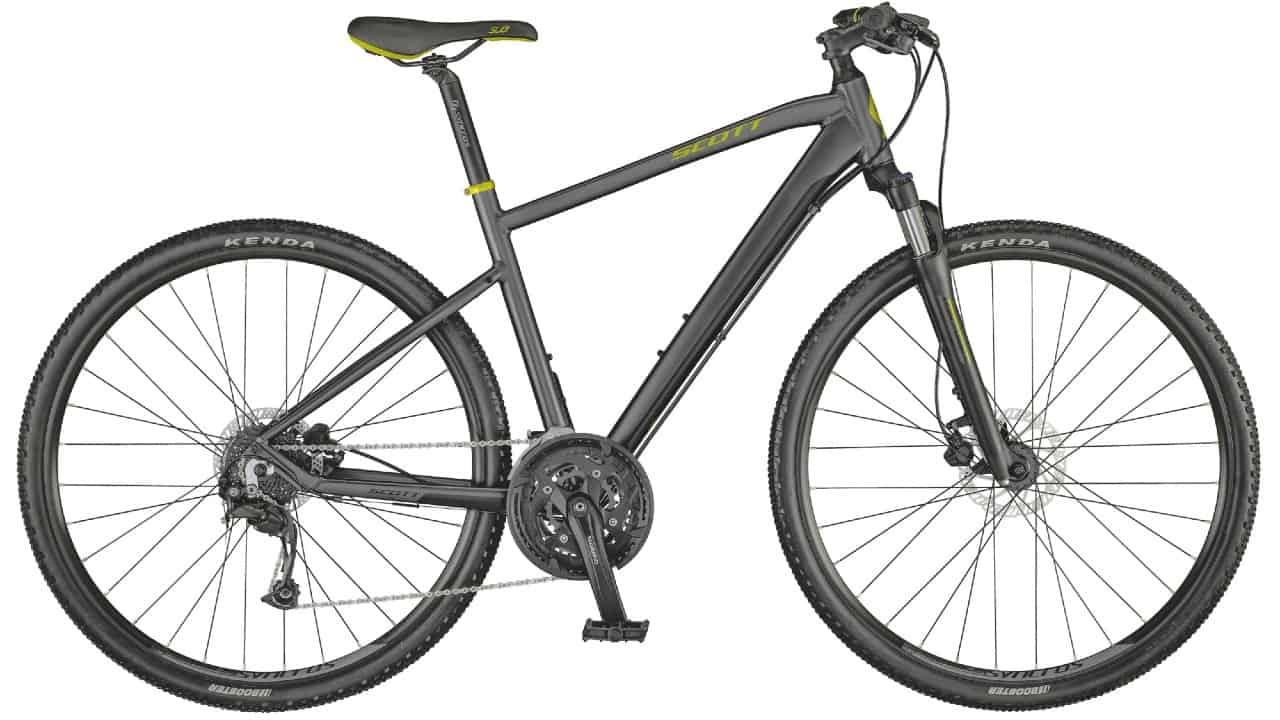
E-bikes -Scott E-Scale 930 or Scott E-Ride
Our E-bike fleet is composed of the Scott E-Scale 930 and Scott E-Ride bike models, equipped with 500W Bosch batteries, that will allow you to go great distances and with 250W Bosch motors, to assist you during the toughest climbs! These aluminum framed Scott bikes come equiped with front suspension with lockout.
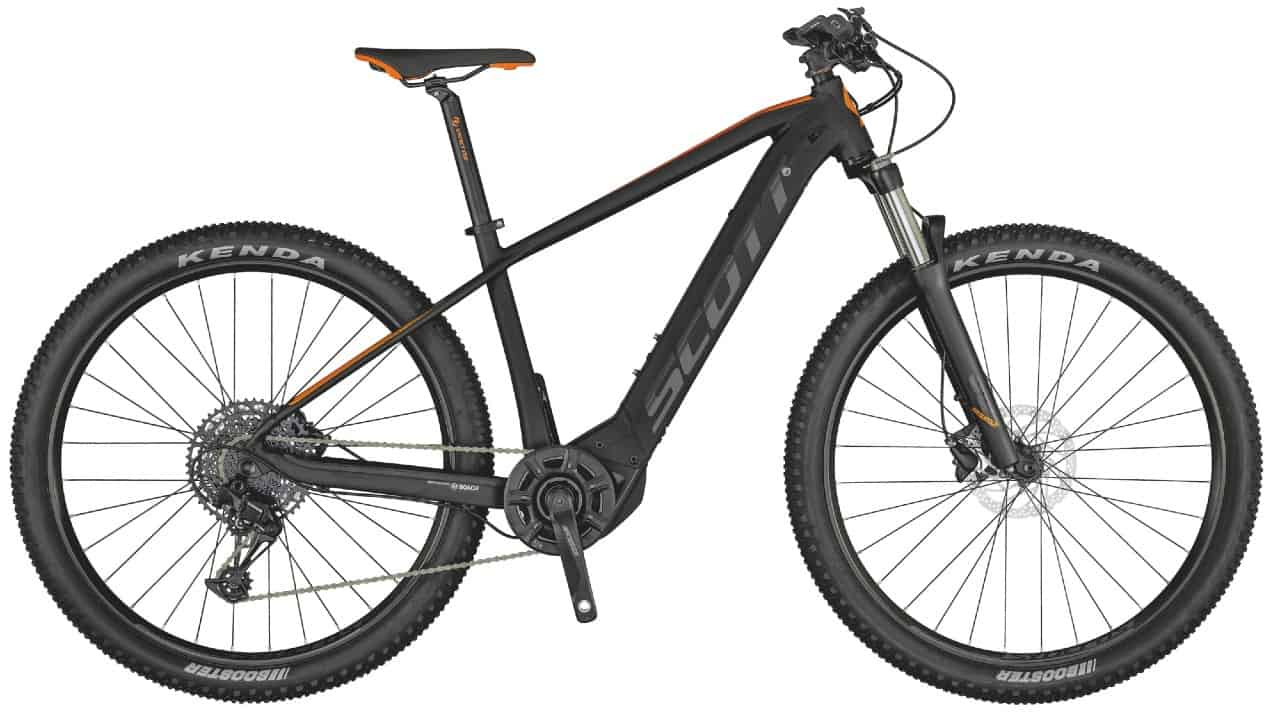
In our bike trips, you’ll also get to use our Garmin Edge 820 GPS device, so you can record and upload all your rides.
RIDE SUPPORT AVAILABLE AT ALL TIMES
In our cycling holidays, you’ll be accompanied by our always present staff and vehicles. They will provide for all the services you need for the best biking experience in Portugal.
At your service, you’ll have a fleet of premium equipped vehicles with several amenities for your comfort.
/Mechanical assistance during the bike tours;
/Luggage and bike transfer between hotels;
/Transfer to and from hotels/airports;
/Premium passenger transport and assistance during the rides, at your disposal;
Bike touring at it's best!
AFTER A GREAT DAY IN THE SADDLE, IT'S TIME TO RELAX.
We work with the best hotels and SPA's, to guarantee you full-access to great relaxing experiences and a good night's sleep after your bike tour.
/ Acess to the best SPAs;
/ Free time for sightseeing;
/ Experience adapted to your own pace and holiday style;
We strive to provide our guests with time to relax and immerse into the atmosphere, providing a balance between great activities and well deserved “me time” on your cycling holidays Portugal!
CYCLING HOLIDAYS FOR EVERY TYPE OF RIDER
While planning your cycling holidays, our staff may contact you to ask for further details to better design a bike tour more suited to you. However, all our tours are built to adapt to groups with different riding experience, having shorter and longer options. For "expert" riders, we provide additional cycling challenges. On the other hand we invite all our guests to simply hop into our premium equipped vans if they feel so or just enjoy a recovery day without using their bike.
RIDER TYPES:
1 BEGINNER
/ I ride my bike on a regular basis, for fitness, commuting or out with friends. I prefer rolling terrain but enjoy reaching my goals and enjoy an active lifestyle. I like to overcome some challenges on my bike, but mostly enjoy the landscapes and atmosphere during group rides.
You will get to ride at your own pace, in moderate distances and hop on our premium van if you so desire or, you can challenge yourself when you feel comfortable! You’ll get to ride in a peloton with like-minded people and always accompanied by our guides. If you want an extra "help" on your rides, you can also request an e-bike.
2 INTERMEDIATE
/ Riding is a great part of my life, and I ride my bike regularly with my friends. I am comfortable with rides of 2 to 3 hours, or even more at a relatively strong pace. I like to be challenged and to surpass obstacles or just ride smoothly in a peloton.
You will get to feel different riding experiences, from tougher climbs to rolling along in great company. You’ll have time to enjoy the great landscapes, gain speed in the descents and also push yourself and climb those tough hills. You’ll enjoy the variety of terrain, riding in a peloton and pushing a little harder just before the stop at the café.
3 EXPERT
/ I ride my bike an average of 100 kilometres or more per week and enjoy a fast paced ride for an extended period of time. I love to train, improve and be challenged by other riders. I enjoy all riding experiences, from big climbs to long, technical descents, especially the ones that allow me to push my limits and make long lasting memories.
You’ll get to ride in a peloton along with your peers but also challenge them on the long climbs. Lead the pack and take on the special extra-challenges we have in store for you – try to keep up with our guides as you go for the extra mile just before your well deserved rest and massage at the hotel!
Cycling holidays Portugal for all.

